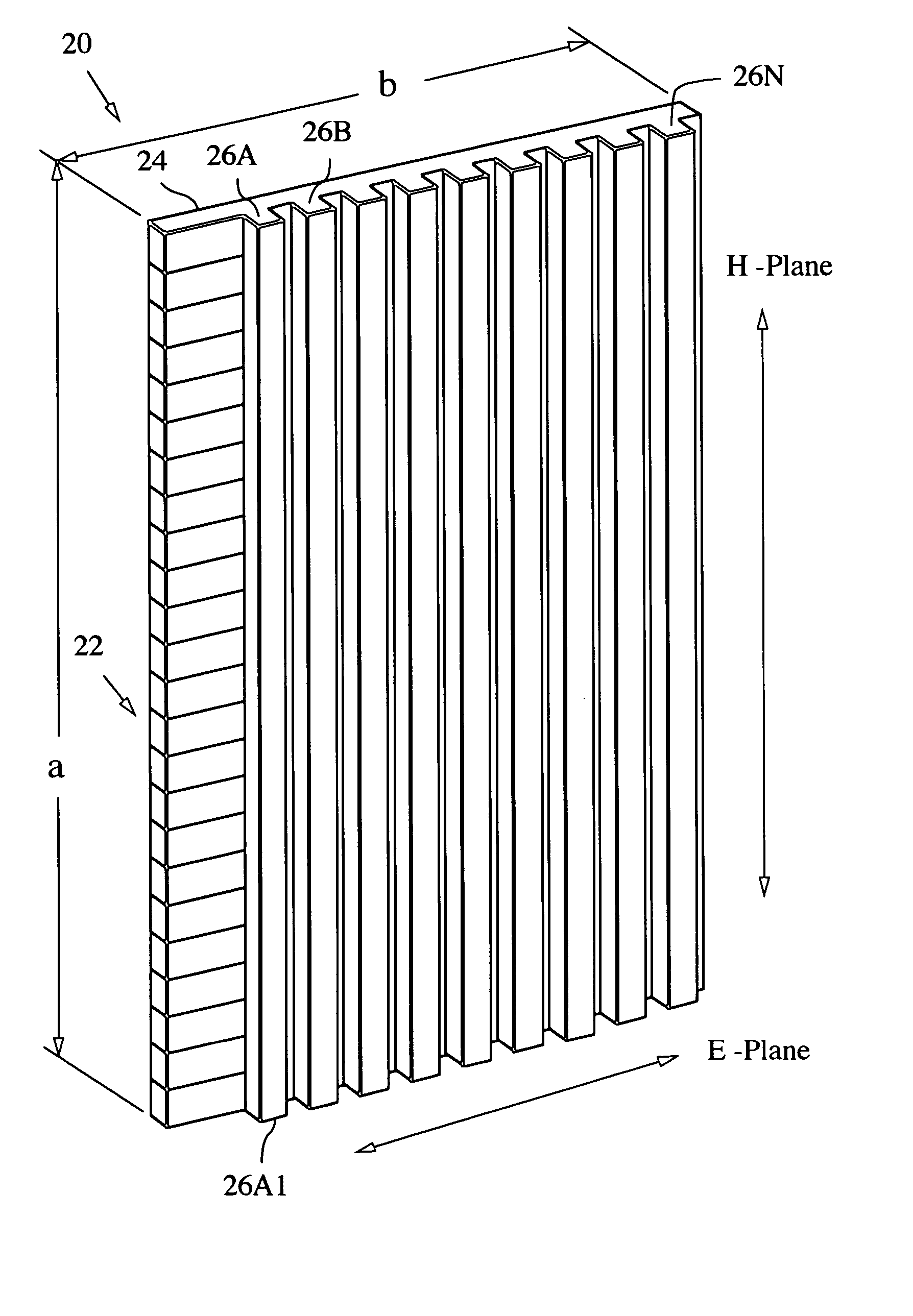MMW electronically scanned antenna
an electronically scanned, antenna technology, applied in the direction of antennas, linear waveguide fed arrays, slot antennas, etc., can solve the problems of lossy feed networks, inability to fully populated discrete arrays, and high building costs of applications
- Summary
- Abstract
- Description
- Claims
- Application Information
AI Technical Summary
Problems solved by technology
Method used
Image
Examples
Embodiment Construction
[0014] In the following detailed description and in the several figures of the drawing, like elements are identified with like reference numerals.
[0015] An exemplary embodiment of an electronically scanned antenna (ESA) employs CTS (continuous transverse stub) subarray panels for the aperture, which are relatively easy to build and low cost. An exemplary W-band subarray panel 20 is shown in FIG. 1; the panel can be constructed to fit within a two inch by two inch area. A CTS structure is described in U.S. Pat. No. 5,266,961, “Continuous Transverse Stub Element Devices and Methods of Making Same,” the entire contents of which are incorporated herein by reference. The array structure 20 is fabricated in this example as a metallized plastic wave guide structure, wherein a dielectric structure has metal layers plated thereon. The structure 20 includes an input edge 24, and a plurality of continuous transverse stubs 26A . . . 26N. The transverse edge surfaces of the stubs, for example, ...
PUM
 Login to View More
Login to View More Abstract
Description
Claims
Application Information
 Login to View More
Login to View More - R&D
- Intellectual Property
- Life Sciences
- Materials
- Tech Scout
- Unparalleled Data Quality
- Higher Quality Content
- 60% Fewer Hallucinations
Browse by: Latest US Patents, China's latest patents, Technical Efficacy Thesaurus, Application Domain, Technology Topic, Popular Technical Reports.
© 2025 PatSnap. All rights reserved.Legal|Privacy policy|Modern Slavery Act Transparency Statement|Sitemap|About US| Contact US: help@patsnap.com



